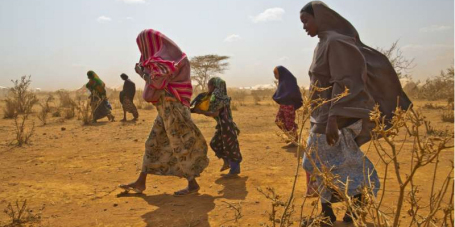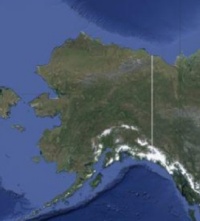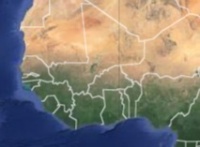Climate Change and Migration
Figures from the IOM (International Organization for Migration) show that worldwide we have around 192 million migrants.
Out of these, a growing number are climate-related migrants. Though specific numbers of how many migrants can be attributed to be moving due to climate change, both currently and in the future, is a complex calculation and continues to be disputed.
Despite this, many different scholars have shown that migration will increase due to global environmental changes, either as a result of slow onset events (e.g. sea-level rise) or sudden and extreme events (e.g. flash floods to typhoons). Moreover, these can have knock-on effects to economic, social and political stresses, even spilling into conflict, which can also give rise to decisions to migrate.
This Dossier looks to provide a broad overview of the complex factors between climate change and migration, pitched across a range of perspectives and disciplines.
Switch to German version of this dossier
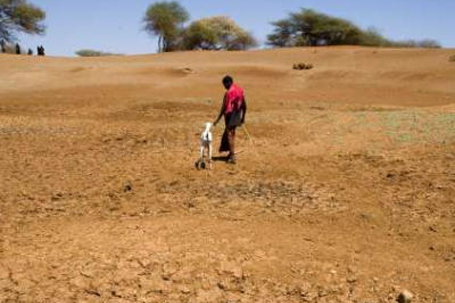
© UNHCR / B. Bannon
Climate induced Migration: A Research Challenge
The 21st century will be characterised by two major transformations: urbanisation and climate change. A growing body of literature from different disciplines targets the threats, the challenges and, to a lesser extent, the opportunities that will rise from the complex interactions between climatic and environmental stressors, human mobility and development.
To the full article
Climate Change, Migration and Conflict
The long envisaged flood of "climate refugees" was initially linked directly with increasing conflicts, however, recent research has added to a more nuanced understanding of the complex relationship between climate change, migration and conflict.
To the full article
Migration for Climate Adaptation
In many rural societies across the world, migration has been a livelihood strategy for generations. Seasonal and temporary rural-to-urban and rural-to-rural migration are commonly adopted by those households relying on subsistence agriculture and struggling to deal with environmental change. Labour migration is particularly widely acknowledged as a rational adaptation strategy in response to climate change processes.
To the full article
The Governance of Climate Change-Induced Migration
Migration under the context of climate change is caught at a policy crossroads, with different policy areas all having legitimate claims to why they should be involved. Despite this, climate-induced migration has still not been fully integrated into any policy area, and few concrete steps have been made to govern it.
To the full article
Framing Legal Strategies for Dealing with Environmental Degradation, Human Mobility and Development
Extreme events are likely to increase in frequency and intensity while our current ability to manage displaced populations is often inadequate. Following efforts such as the Guiding Principles on Internal Displacement, and the 2011 Nansen Principles, the development of functioning and coherent legal frameworks must be a priority.
To the full article
Short-term protection needs and long-term policy implications
Which implications of climate change for migration patterns in rural agricultural areas of the Global South can be identified? How important are coherent policies on short-term protection needs as well as on long-term adaptation processes?
To the full article
Gender impacts and social differentiations of climate-induced migration
The mobility outcome of extreme events has also been increasingly problematised and attention has been drawn to immobility as a dangerous outcome that is likely to affect the most vulnerable in society. Thus a better understanding of the role of social inequalities (e.g. class, gender, ethnicity) in shaping migration as an adaptation strategy is paramount for effective policy-making.
To the full article
Different authors and institutions contributed to this dossier. Feedbacks and comments from readers are welcome.
Contributors
Authors:
Michael Brzoska
Institute for Peace Research and Security Policy
University of Hamburg
Elisa Fornalé
World Trade Institute, Bern
Christiane Fröhlich
Institute for Peace Research and Security Policy
University of Hamburg
Giovanna Gioli
Research Group Climate Change and Security
University of Hamburg
Tania Guillen Bolaños
Climate Service Center Germany
Rebecca Hofmann
Ludwig-Maximilians-Universität, München
Diana Hummel
Institute for Social-Ecological Research (ISOE), Frankfurt
Elina Marmer
Insitute for Intercultural Comparative Education
University of Hamburg
Andrea Milan
United Nations University, Bonn
Sarah Nash
Research Group Climate Change and Security
University of Hamburg
Jürgen Scheffran
Research Group Climate Change and Security
University of Hamburg
Papa Sow
Center for Development Research
University of Bonn
Review:
Stephanie Deubler
Deutsche Gesellschaft für Internationale Zusammenarbeit (GIZ)
Scientific Editing and Translations:
Giovanna Gioli
University of Hamburg
April Humble
Jan Moritz Kaiser
María Mañez Costa
Susanne Schuck-Zöller
Climate Service Center Germany
Regina Meyer-Nehls
Web-Design:
Uwe Kehlenbeck
Climate Service Center Germany
Case Studies
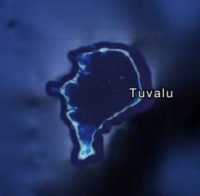
Future climate would further challenge and push to the limit the adaptive capacity of vulnerable communities. Climate related resettlement is already a reality in some parts of the world, for example on some of the "sinking islands".
To the full article
The United Nations Refugee Convention
The United Nations Refugee Convention
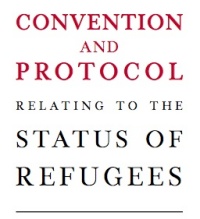
The 1951 Convention relating to the Status of Refugees is the key legal document in defining who is a refugee, their rights and the legal obligations of states.
The United Nations Refugee Convention
IPCC Assessment Reports
IPCC Assessment Reports
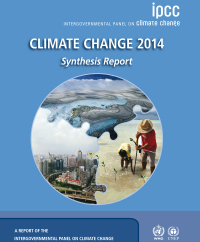
The Intergovernmental Panel on Climate Change (IPCC) is the world’s foremost collection of climate scientists. Throughout 2013 and 2014, the group will release its Fifth Assessment Report in four installments, highlighting the current state of the climate system and climate change, its environmental and socio-economic impacts, and mitigation strategies that can limit emissions.
IPCC Assessment Reports
The Nansen Initiative
The Nansen Initiative
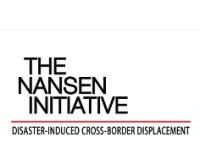
Every year around the world, millions of people are forcibly displaced by floods, wind-storms, earthquakes, droughts and other disasters. Many find refuge within their own country but some have to go abroad. In the context of climate change, such movements are likely to increase. National and international responses to this challenge are insufficient and protection for affected people remains inadequate. The overall goal of the Nansen Initiative is to build consensus among States on key principles and elements to protect people displaced across borders in the context of disasters caused by natural hazards, including those linked to climate change.
The Nansen Initiative
Foresight Report
Foresight Report: Migration and Global Environmental Change
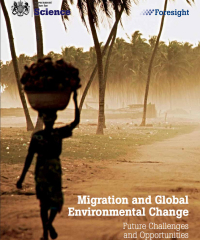
This report considers how profound changes in environmental conditions such as flooding, drought and rising sea levels will influence and interact with patterns of global human migration between now and 2060. It examines global migration trends and internal migration trends within developing countries.
The findings have implications for issues that are critical for policy-makers, now and in the future, including;
- human vulnerability
- adaptation to climate change
- economic development
- conflict
- location and quality of human settlement
Foresight Report: Migration and Global Environmental Change
World Bank
World Bank: Migration and Remittances Factbook 2011
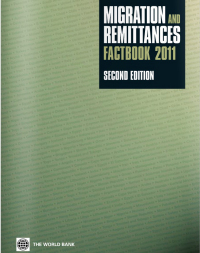
Migration and Remittances Factbook 2011 provides a snapshot of migration and remittances for all countries, regions and income groups of the world, compiled from available data from various sources.
World Bank: Migration and Remittances Factbook 2011
International Organization for Migration (IOM)
IOM: Migration, Environment and Climate Change: Assessing the Evidence
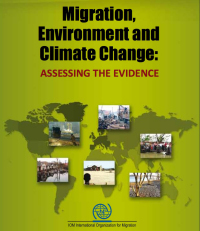
Established in 1951, IOM is the leading inter-governmental organization in the field of migration and works closely with governmental, intergovernmental and non-governmental partners.
With 157 member states, a further 10 states holding observer status and offices in over 100 countries, IOM is dedicated to promoting humane and orderly migration for the benefit of all. It does so by providing services and advice to governments and migrants.
The main purpose of this book is to suggest concrete ways in which the international community can begin to address the huge gaps in our knowledge relating to the likely impact of climate change on migration.
IOM: Migration, Environment and Climate Change: Assessing the Evidence
Where the Rain Falls
Where the Rain Falls: Global Policy Report
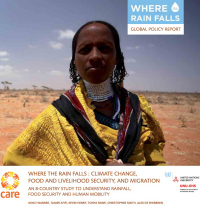
“Where the Rain Falls” initiative was launched in 2011 to enhance the capacity of governments, civil society and the private sector to better understand and effectively address the relationship between changing weather patterns, food security and human mobility in some of the world’s most vulnerable countries and communities. The Where the Rain Falls project, through its research, advocacy and risk reduction and adaptation efforts, provides better knowledge, recommendations and practical solutions to improve the lives of vulnerable communities in developing countries around the world.
Where the Rain Falls: Global Policy Report
IDMC: Global Estimates 2014
Global Estimates 2014 - People displaced by disasters
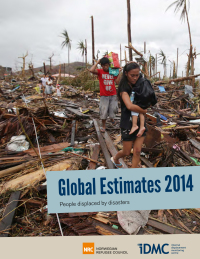
IDMC’s Global Estimates report aims to equip governments, international and regional institutions and civil society with up-to-date estimates and analysis of the displacement disasters cause and to identify trends as the basis for evidence-based dialogue and decision-making. The report presents estimates about cause and dimension of disaster related displacement for 2013, and for each of the five preceding years.
Global Estimates 2014 - People displaced by disasters

